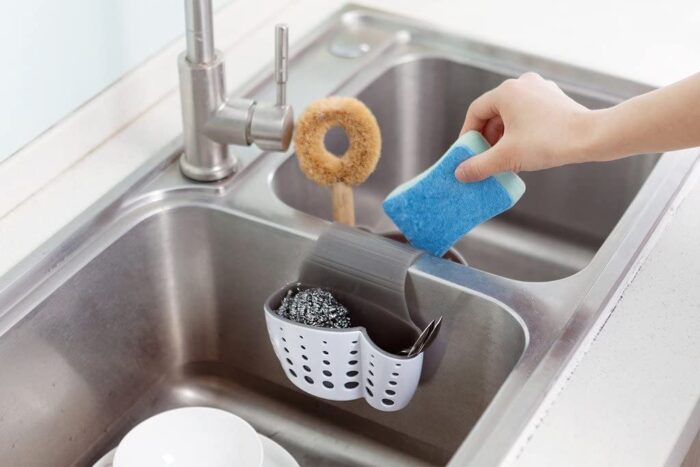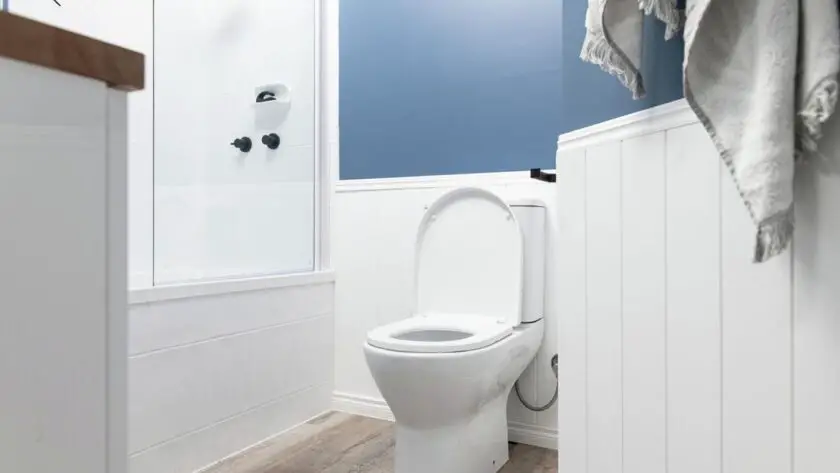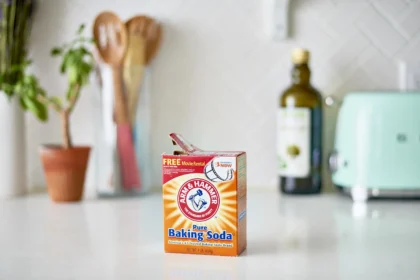When it comes to germs, most people would assume that the toilet seat is the biggest culprit for harboring bacteria. However, it may come as a surprise that everyday items in your kitchen, car, and other areas of your home can actually contain several thousand times more germs than the humble latrine.
While being overly obsessed with cleanliness can have its downsides, living in a home overrun with certain germs can pose serious health risks. In this article, we will explore 17 germ-infested items commonly found in households and provide tips on how to effectively clean and maintain them.
- Dish Cloths and Sponges: The very items we rely on to clean our dishes and pans can paradoxically be making them dirtier. Studies have revealed that dishcloths and kitchen sponges can harbor an astonishing number of bacteria, with kitchen sponges being 200,000 times dirtier than a toilet seat.
Coliform bacteria and E. coli have been found on these cleaning tools, posing a risk of contamination. To mitigate this, it is recommended to wash sponges, kitchen towels, and cloths regularly, using high heat and allowing them to dry between uses.
- Other Cleaning Equipment: It’s not just sponges and cloths that can be breeding grounds for germs; other cleaning equipment such as vacuum cleaner brushes, mop heads, brooms, and dusters can also harbor microbes. These items should be washed or replaced regularly to maintain cleanliness.
Additionally, appliances like dishwashers and washing machines can accumulate bacteria, necessitating monthly deep cleaning.
- Bath Towels: Bath towels, which come into contact with dead skin cells and moisture, can become a breeding ground for bacteria. Sharing towels can lead to cross-contamination and the transmission of various illnesses.
To prevent this, it is crucial to wash and replace towels at least every three days. Using vinegar instead of fabric softener can help eliminate odors and improve absorbency.
- Cutting Boards: Cutting boards can harbor a staggering 200% more fecal bacteria than an average toilet seat, underscoring the importance of practicing hygienic food preparation techniques. Using separate cutting boards for meats and vegetables and thoroughly washing them with hot soapy water after each use can help prevent bacterial contamination.
Choosing the right cutting board material, such as hard wooden boards like maple, can also minimize bacterial growth.
- The Kitchen Sink: The kitchen sink, a hub for food particles and sponges, contains an enormous amount of bacteria. In fact, the number of bacteria in the kitchen sink can be up to 1,000 times higher than that found in a toilet.
Regularly scrubbing the sink and faucet with a mild bleach and water solution or using natural alternatives like tea tree oil, dish soap, water, and baking soda can help maintain a hygienic environment.

- Welcome Mat: While welcome mats serve an important role in reducing home allergens, they can also become breeding grounds for bacteria if not properly maintained. Traces of coliform bacteria, including fecal bacteria, have been found on shoe soles, and wiping feet on welcome mats can transfer these germs into the home.
Regularly washing or spraying welcome mats with natural disinfectants can help eliminate bacteria.
- Toothbrushes: Toothbrushes, frequently used and exposed to moisture, can harbor millions of bacteria, leading to oral health issues. Allowing toothbrushes to dry between uses, cleaning them regularly with castile soap and essential oils, and replacing them every three months can help maintain oral hygiene.
It is also advisable to keep toothbrushes away from toilets, as flushing can release bacteria into the air.
- Makeup Brushes: Makeup brushes and sponges, if left unwashed, can accumulate dirt and bacteria, causing skin outbreaks. Regular cleaning of these tools, at least once a week, is essential for maintaining flawless skin.
Baking soda can be used as a brush cleanser. It is important to store makeup brushes away from the bathroom, as the humidity can promote bacterial growth.
- Purses: Women’s handbags, particularly leather ones, can contain fecal bacteria, especially on the bottom, handles, and items inside.
Regularly wiping or washing handbags and avoiding placing them on bathroom floors or welcome mats can help keep them clean and prevent the spread of germs.
- Coffee Machines: Coffee machines, particularly those with water tanks and pod compartments, can harbor harmful bacteria and molds such as E. coli, staphylococcus, and streptococcus.
Regular cleaning of these components is crucial to prevent the proliferation of germs. Studies have shown that coffee maker reservoirs can contain more germs than bathroom sinks. Proper cleaning and maintenance of coffee machines are essential for ensuring a safe and hygienic beverage experience.
- Light Switches: According to a study conducted at Simmons College in Boston, a bathroom light switch can harbor as much bacteria as a trash can. While these germs are likely to be your own and less likely to make you sick, a study conducted at the University of Houston revealed that light switches in hotel rooms are one of the most germ-contaminated fixtures in public places.
To keep the germs in check, it is advisable to wipe down light switches, especially in the bathroom and kitchen, at least once a week.

- Remote Controls: Despite being used by every household member and often by guests, remote controls are rarely cleaned. With each touch, bacteria-infested fingers transfer numerous microbes that find a cozy home between the buttons.
Surprisingly, researchers found that remote controls in hospital rooms harbored more germs than any other commonly touched item. Among the bacteria detected, MRSA was exclusively found on the remote controls and not on any other tested objects.
Remember to clean your remote controls every other week, and extend the same cleaning routine to any game consoles you may have.
- Phones: It may be disturbing to learn that the device you spend about 10 hours a day on could harbor ten times more bacteria than a toilet seat, as suggested by research from the University of Arizona. While none of us would willingly press a toilet seat against our face or spend hours tapping on its rim, we unknowingly do so with our phones.
The same applies to laptops, tablets, and keyboards, which should be gently but thoroughly wiped each day with a soft cloth to minimize germ buildup. Additionally, it is essential to be aware of the unhealthy consequences of excessive smartphone use.
- Earbuds and Headphones: Whether you wear headphones for work or enjoy music while exercising, it is crucial to clean your earphones thoroughly. A study published in the Online Journal of Health and Allied Sciences found that frequent use of earphones significantly increases bacterial growth in the ear, with 86% of ear samples and 62% of earphone samples tested showing bacteria.
Sharing earphones with friends was also found to contribute to a higher presence of harmful bacteria, emphasizing the importance of using your own headset.
- Yoga Mat and Other Exercise Equipment: While exercise is beneficial for overall health, it is important to choose workout locations wisely. Recent studies have revealed that average exercise bikes in public gyms contain 39 times more bacteria than reusable plastic cafeteria trays, treadmills harbor 74 times more bacteria than water faucets, and free weights host 362 times more bacteria than toilet seats.
Yoga mats can also be germier than cell phones or airline seats due to direct skin contact. To minimize the risk of exposure to illness, it is recommended to spray your mat or gym equipment with a blend of water, vinegar, and essential oils between uses and ensure thorough drying.
- The Car: For many people, the car is an extension of their home, especially considering the average US commute time of 50 minutes. Surprisingly, steering wheels have been found to harbor nine times more germs than public toilet seats.
This finding should serve as a reminder, particularly for the 10% of motorists who never clean their cars, especially since many people tend to eat on the go.

- Your Hands: Your hands play a significant role in the transmission of germs, both between objects and from other people to yourself. On average, human hands harbor approximately 150 different species of bacteria, some of which can be beneficial while others less so.
Developing a habit of washing your hands regularly is crucial, not only after petting animals or handling raw meat but also before applying makeup or going to bed. Research has shown that people who wash their hands seven times a day experience around 40% fewer colds than the average person.
For a thorough handwashing, opt for a natural soap like castile, as recommended by the Centers for Disease Control and Prevention, as it effectively removes soil and microbes from the skin. It is advisable to avoid using antibacterial soaps due to their lack of proven effectiveness, contribution to antibiotic resistance, and inclusion of toxic ingredients that can harm our health.
In conclusion, the results of this alarming study emphasize the importance of maintaining cleanliness and hygiene in our kitchens and homes.
By identifying and addressing these germ hotspots, we can significantly reduce the risk of illnesses and infections that stem from our daily interactions with these items. Incorporating simple cleaning routines and hygiene practices can make a world of difference in safeguarding our health and well-being.
Remember to regularly clean and sanitize dish cloths, sponges, cutting boards, and other kitchen utensils. Pay special attention to frequently touched surfaces such as light switches, remote controls, and phones, which are often overlooked in our cleaning routines.
Additionally, ensure that personal items like toothbrushes, makeup brushes, and purses receive proper care and maintenance.
By implementing these measures, we can create a healthier living environment for ourselves and our loved ones. Let us not underestimate the power of cleanliness in our homes, as it plays a vital role in reducing the transmission of bacteria and promoting overall well-being.
So, the next time you embark on your cleaning routine, remember that the toilet seat might not be the dirtiest thing in your home after all. Take charge of your surroundings, keep them clean, and stay healthy!





